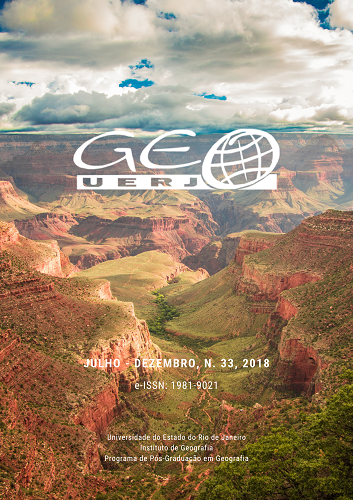FIM DO CORTE MANUAL DA CANA-DE-AÇÚCAR NA MICRORREGIÃO DE ITUIUTABA (MG) E OS IMPACTOS PARA OS TRABALHADORES / END MANUAL OF SUGAR CANE CUT IN ITUIUTABA (MG) AND ITS IMPACTS FOR WORKERS
DOI:
https://doi.org/10.12957/geouerj.2018.29749Palavras-chave:
Cana-de-açúcar, trabalho, precarizaçãoResumo
A expansão da produção canavieira na Microrregião de Ituiutaba (MG) vem reestruturando o espaço agrário de todos os municípios, alterando as relações de produção, substituindo culturas, concentrando terras e modificando as relações de trabalho. A produção da cana-de-açúcar tem ocorrido por meio do arrendamento e parcerias de terras, o que leva à diminuição gradativa da produção diversificada de alimentos e culmina, assim, na monocultura da cana-de-açúcar. Como consequência da territorialização de usinas e da expansão da produção de cana, a mão-de-obra para o corte manual se fez presente. Todavia, a falência de duas usinas, a mecanização do corte da cana-de-açúcar e o fim das queimadas contribuíram para que os postos de trabalho do cortador de cana fossem extintos. Nesse contexto, torna-se importante mostrar as condições de vida e de trabalho do trabalhador cortador de cana da Microrregião de Ituiutaba, isto é, como tem sido sua inserção no mercado de trabalho, quais as principais dificuldades, tensões e incertezas que estão enfrentando.
Downloads
Downloads
Publicado
Como Citar
Edição
Seção
Licença
Os Direitos Autorais dos artigos publicados na Revista Geo UERJ pertencem aos seus respectivos autores, com os direitos de primeira publicação cedidos à Revista. Toda vez que um artigo for citado, replicado em repositórios institucionais e/ou páginas pessoais ou profissionais, deve-se apresentar um link para o artigo disponível no site da Geo UERJ.

Os trabalhos publicados estão simultaneamente licenciados com uma Licença Commons BY-NC-SA 4.0.


